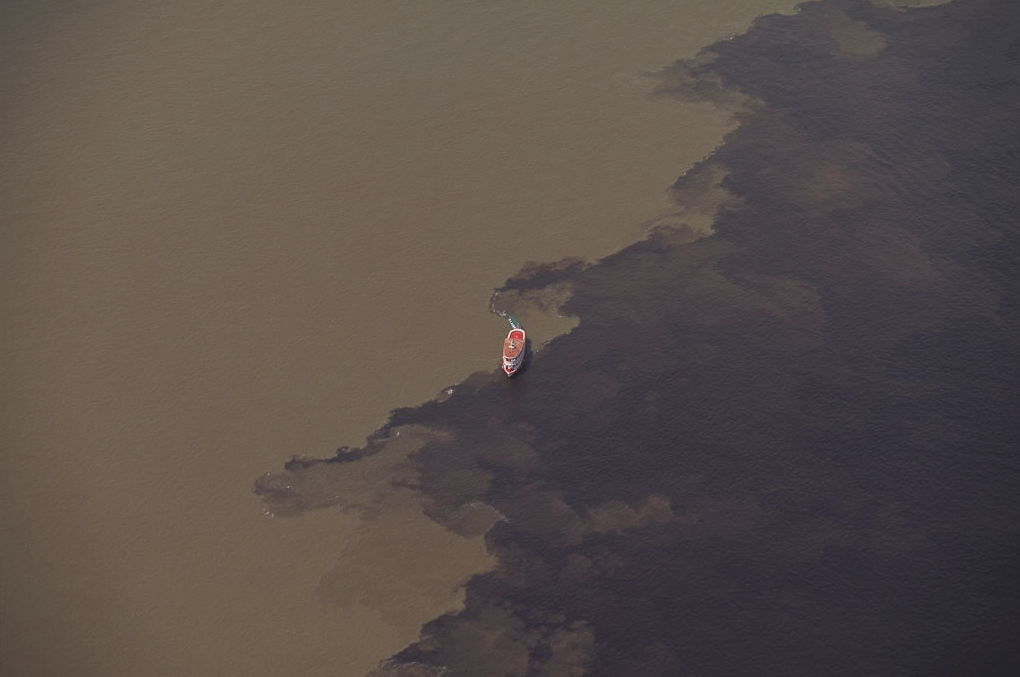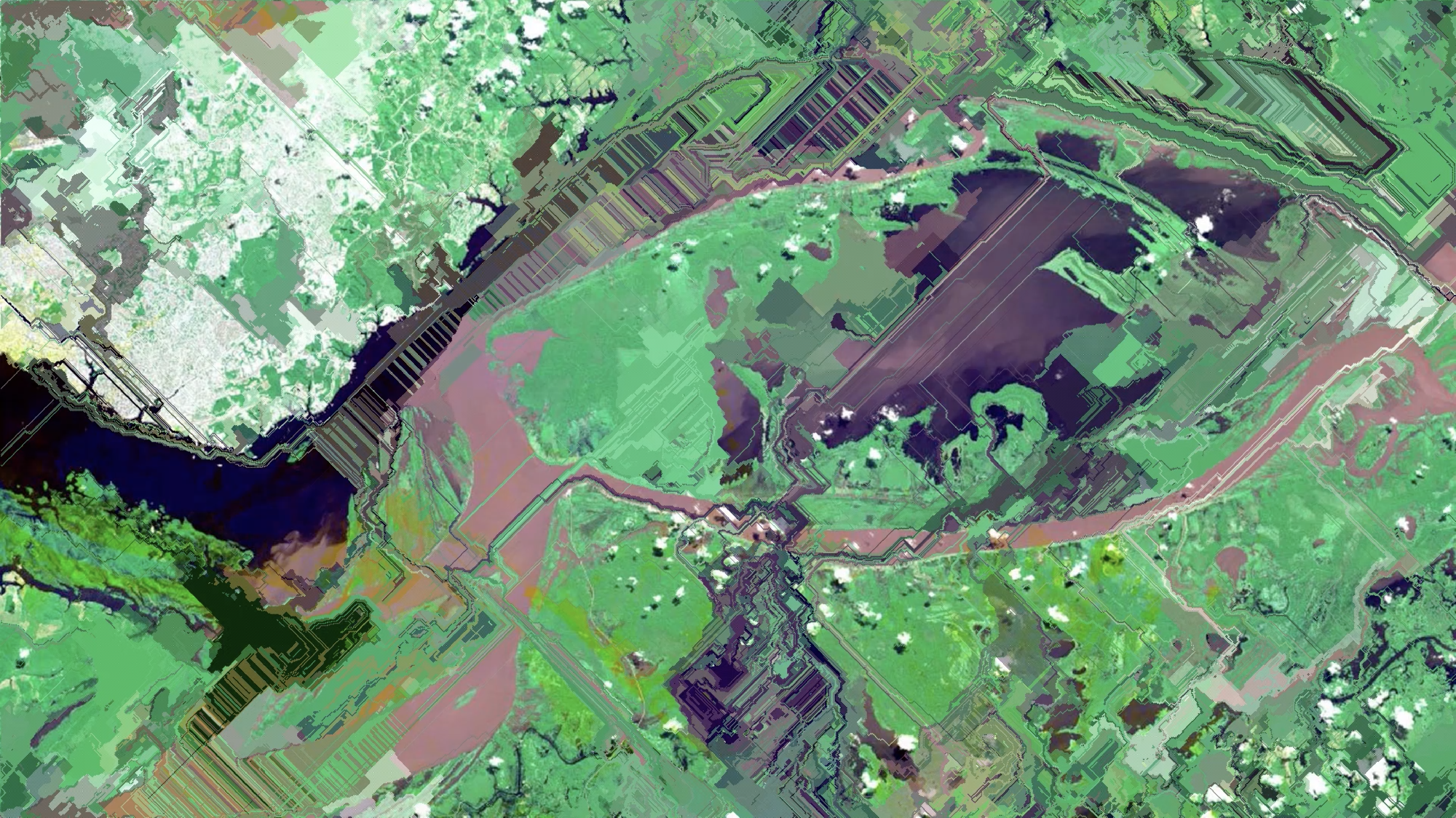AUTOMATA I
Automata I is research project looking into techniques of machine vision. The project identifies
image process analysis as a basis for the computation of autonomous pixel
manipulation agents following a cellular automata logic. Image analysis, as
used in surveillance techniques, at its core is an analysis of patterns and
relationships between pixels. This project brings to light the operations
behind image analysis, allowing the viewer to speculate on proactive
alterations of image content.
The work uses a Langton’s Ant algorithm, which navigates the luminosity field of a satellite image. A large population of agents, with simple movement rules denoted by blue and red circles, navigate the landscape, terraforming and re-composing the terrain. The grid-based calculations behind the cellular automata model define the moving behavior of the ant, allowing for a perpetual feedback loop between the substrate and active agent.
The satellite image of a site in the Amazon, the confluence of two rivers, known as The Meeting of The Waters, works analogously. Due to rivers’ differences in water density, temperature, and speed, they do not merge, but run alongside each other in the same channel, demarcated by the different colours. The algorithm generatively repatterns them.
The process is presented in two formats; the color output which is the human view, which may hold cultural meaning, and the greyscale output which is the algorithm’s view of the underlying state system and rule set on which the agents perform. The objective of juxtaposing these two modes or interpretations of the image/code is to provide an insight into the kind of calculations performed behind image analysis techniques.
The work uses a Langton’s Ant algorithm, which navigates the luminosity field of a satellite image. A large population of agents, with simple movement rules denoted by blue and red circles, navigate the landscape, terraforming and re-composing the terrain. The grid-based calculations behind the cellular automata model define the moving behavior of the ant, allowing for a perpetual feedback loop between the substrate and active agent.
The satellite image of a site in the Amazon, the confluence of two rivers, known as The Meeting of The Waters, works analogously. Due to rivers’ differences in water density, temperature, and speed, they do not merge, but run alongside each other in the same channel, demarcated by the different colours. The algorithm generatively repatterns them.
The process is presented in two formats; the color output which is the human view, which may hold cultural meaning, and the greyscale output which is the algorithm’s view of the underlying state system and rule set on which the agents perform. The objective of juxtaposing these two modes or interpretations of the image/code is to provide an insight into the kind of calculations performed behind image analysis techniques.
The greyscale image, showing the algorithm’s interpretation of the scene. Pixel luminosity drives the
behavior of the agents, shown as blue and red circles.

A langton’s ant operates similarly to a cellular automata, except only one cell in the grid changes each
frame, functioning like an autonomous agent.

The Meeting of The Waters, a site in the Amazon of the confluence of two rivers whose waters do not mix.

Pixel manipulation cellular automata logic.